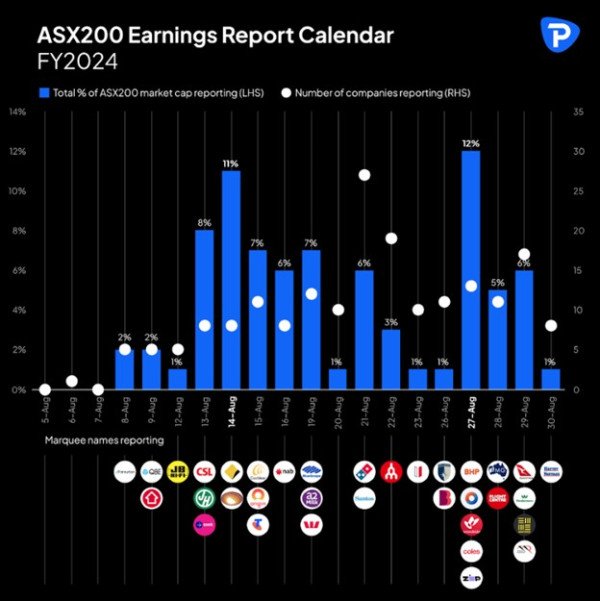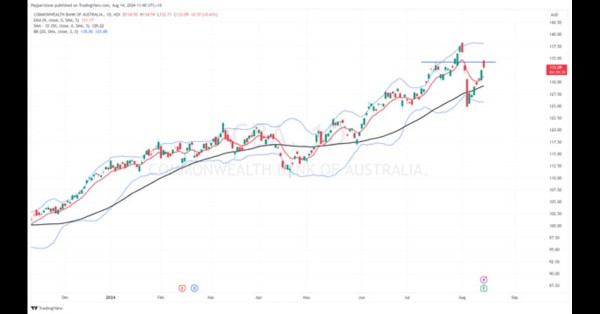CBA FY24 Report: Strong Results, Shareholder's Returns In Focus
On August 14, Commonwealth Bank (CBA), which makes up about 9% of the index, released its FY24 results before the market opened.
 Preview
PreviewOverall, the FY results are strong, with solid capitalization and good credit metrics. However, given the high-interest-rate environment and elevated stock valuations, shareholder returns are a major area of focus.
Key Highlights
The report reveals that CBA's cash earnings for FY24 came in at $9.847 billion, slightly above expectations but below last year’s $10.2 billion.
Thanks to Australia's stable interest rate environment and CBA’s improved deposit competitiveness, the net interest margin (NIM) for the second half of the year came in at 2.00%, up by 1 basis point from the 1H24 and slightly above market consensus. Management noted that the quarterly NIM in the second half remained stable, which suggests that the market’s forecast of a 1.95% NIM for the first half of FY25 might be too conservative.
Market Reaction
Traders initially appeared satisfied with the results, with CBA's stock opening 1.5% higher. However, as of the time of writing, the stock has retreated 1% from its intraday high to around $133.3.
 Preview
PreviewGiven the strong report, I remain optimistic about the stock's performance. If the price holds above the local high of $134.25 from July 17 and fills the gap from August 2, testing the historical high of $138.24 again seems likely.
Focus on Asset Quality and Buyback Speed
Beyond the earnings figures and surprising NIM, the report highlights some areas of concern.
With a relatively straightforward business model, loans are a major revenue driver for Australian banks. I’ve seen a slight uptick in overdue housing and personal loans, with CBA’s troubled and impaired assets (TIA) rising from $7.1 billion last year to $8.73 billion. While this doesn’t signal a major credit issue, ongoing interest rate pressures could worsen CBA’s asset quality. Potential increases in loan loss provisions might impact the bank’s profitability in FY25.
Secondly, CBA declared a dividend of $4.65 per share, up from $4.5 last year. However, with the stock price having risen nearly 19% YTD, the $1 billion buyback plan has only completed less than one-third and its timeline has been extended by 12 months. This partially offsets the benefits of the higher dividend for shareholders.
At the same time, the increased dividend could drive the stock price higher, creating a positive feedback loop. This benefits shareholders but makes short selling under high valuations more challenging.
Outlook
In summary, CBA’s results align with market expectations, and I remain bullish on the stock.
The strong NIM in the second half of FY24 is encouraging, but the stock’s long-term performance will be influenced by the global economic climate, RBA’s interest rate policies, and the Australian housing market. If economic data from developed markets stays strong, Australian inflation eases, and the housing market recovers, it should boost loan demand and benefit cyclical sectors like banking.
For CBA, since the report does not provide sufficient reasons to support an upgrade in earnings consensus, any increase in the stock price due to market sentiment will only make this already expensive stock even pricier.
However, in the face of a global economic slowdown and high domestic interest rates, CBA’s asset quality and shareholder returns will remain key areas to watch.